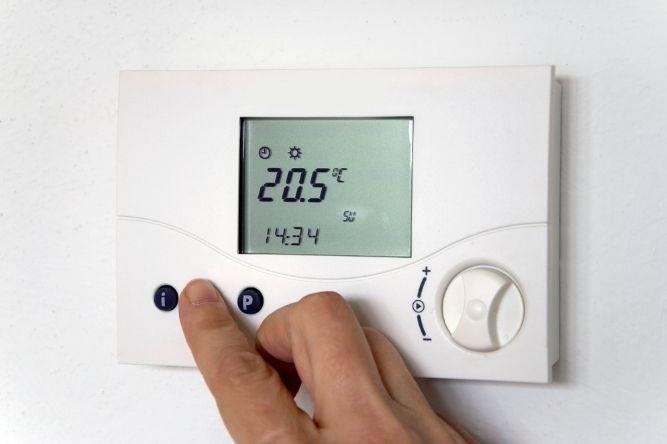
We’re constantly adjusting the temperature in our homes. Many people program their thermostats to make their homes more energy-efficient while they’re away at work. Almost all of us will adjust the temperature by a degree or two to ensure it’s perfectly comfortable when we’re staying indoors. Comfort and temperature go hand-in-hand, after all.
That all happens while we’re awake – but what should the temperature be when we’re sleeping?
We’re going to help you find that answer. And, if all goes well, you’ll end up getting better, more restful sleep.
The optimal sleep temperature (according to scientists)
In an age where insomnia is all too common, sleep science has become more important than ever. Scientists have researched the optimal room temperature to encourage your body to fall asleep more quickly and for the quality of your sleep. That temperature? Between 15 to 19° C.
There are a number of reasons for this, from how your body’s circadian rhythm regulates body heat to how being too hot or too cold can affect REM sleep.
We’re not going to go too in-depth on the topic of sleep science in this article, though we highly recommend you read the page we linked to if you want to learn more. What we’ll explore from here is what other factors can affect the optimal room temperature for sleep.
Fabrics and sleep temperature
Different bedding is better at insulating you while you sleep. Some people sleep with several blankets, or with very heavy comforters, while other folks sleep with very little bedding. Some people sleep in their pyjamas, while others sleep nude or semi-nude.
All of these factors will affect your body temperature as you sleep. That means they’ll affect your optimal sleep temperature.
Your body and sleep temperature
No two sleep setups are likely to be the same – people wear different clothes, sleep under a variety of fabrics, and sleep on several types of beds.
In the same way, no two bodies are the same. Some people run hot, while others run cool. Different circadian rhythms, different metabolisms, and countless other factors will determine how hot or cold a person might be when it comes time to sleep. Age is another factor when it comes to sleep temperature – as we age, our resting body temperature tends to become cooler.
Take the experimental approach to sleep temperature
Start with your room temperature around the middle of the recommended range: 17 degrees Celsius. Every night, go to sleep at the same time, using the same sleepwear and other sleep fabrics. Stop consuming caffeine and other stimulants at the same time every day.
By limiting the influence of other factors on your sleep, you can start to play with the perfect sleep temperature. Try increasing or decreasing the temperature of your room by a degree every night.
You can also try keeping the temperature constant every night, and changing other factors, like your sleepwear.
No two people have exactly the same sleeping habits
And no two people have exactly the same bodies. That means two people living in the same household are likely to have different optimal sleeping temperatures. It’s a good idea to have different climate zones throughout your home – that way, people sleeping in different rooms can adjust the temperature to suit their needs.
At Provincial, we offer a number of services, from furnace installation to air conditioner repair in Winnipeg. We have some exciting news for families looking for greater control over their room temperature as they sleep: We also install and repair split systems that allow you to control the temperature of each room individually! That’s comfort.
Sleep well!

